Kinross Mine, Round Mountain, Nevada
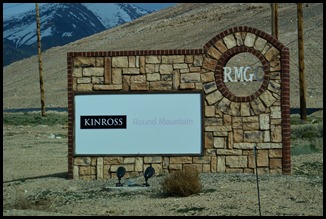 We were by the side of the road, taking pictures of this giant pit mine, and a guy rolled up in his pickup truck (what else?) and said “Hey, you can get a tour of the mine if you call up”.
We were by the side of the road, taking pictures of this giant pit mine, and a guy rolled up in his pickup truck (what else?) and said “Hey, you can get a tour of the mine if you call up”.
So we called, and called again. We were told there was “a lot of paperwork” and several days’ lead time. We gave it one final call – – and finally we got connected with a gal who said she could help us.
We explained that we were camped 30 miles away and would prefer if we could arrange things by phone and then come in and sign the waivers etc. the day of the tour.
“I’ll call you back”, she said. Boy, have we heard that one before. But she DID call us back, and easily arranged an hour-long tour (over 90 minutes in fact). The mine considers it good PR, and there’s no charge. All told, it took us about a day and a half to make the arrangements, and we did not have to go to the mine in advance. We were actually pretty excited about it.
The mine is owned by Kinross (big international mining corp), but is known as RMGC, Round Mountain Gold Company. Gold’s been mined there since 1906, and the big pit mine has been going since 1940.
The desert is really big in Smoky Valley, and even the big pit mine is only a relatively small mark on the vast terrain. But when you get closer, it sure gets bigger. These next photos were taken from almost a mile away. Hadley is about 3-4 miles from the mine. Far enough to eliminate noise, close enough for a sweet commute.
Main operating area (pit is behind it) – – –
– – – and huge 500-foot-high leach stacks (gold ore being processed in the open) that stretch for miles.
We received an aerial map of the central mining area. I couldn’t see how we’d cover all those points of interest in only an hour, and in fact we were only taken to a couple of these many identified points. But it was still very cool. Our guide was extremely informative, and I got more information than I could absorb about gold mining and its many aspects. I’m already pretty technical, but before the tour was done, my brain was full.
Our first stop was at the south end of the main pit (right-hand edge of pit above). The entire pit is about three times larger than this wide-angle picture below. It’s almost 1000 feet to the bottom now, and since they’ve hit a water table, future depth is uncertain. Meanwhile, there is plenty of lateral expansion available.
These are all daylight photos, but the mine runs continuously, 24×7. Rain, wind, and heat or cold are not consequential; only the heaviest of snows will slow things down, and even then only for a few hours typically.
All operations begin with blowing the living crap out of a bunch of solid rock. Here, drill rigs bore holes in a 20′ x 20′ grid. First, a simple line of holes is blown to “fracture” a major block of rock. Then, the big grid is fired off, and this breaks up the massive block into small enough chunks that it can be dealt with.
The post-blast rock is scooped up by shovels and loaded into massive “haul trucks”. This picture shows two haul trucks sequencing under the shovel. The big caterpillar tractor in the center is used to shovel the loose rock into position for the less-maneuverable shovel.
This picture will help with scale. The teenie vehicle in the middle is a full-size long-bed crew-cab pickup truck (roughly 22 feet long). If you stood it on its tailgate, the front bumper would reach the top of the haul truck.
After the shovel does the heavy lifting, the haul trucks deliver rock to either the mill, or the waste stacks. Destination is determined by a really complex process of core-sampling, assay, and GPS-guided dispatch systems. It’s purely impressive — as a career systems-engineer, I can really appreciate the people and technology needed to accomplish what might otherwise appear to be simple brute transport.
Speaking of brute: Haul trucks here are medium-sized (in their class). They haul 250 tons of rock per trip, while the biggest available can haul 500 tons. To put this in perspective, each mid-size haul truck is toting the equivalent of THREE fully-loaded freight train railcars.
They roll on six 12-foot-diameter tires that weigh 10,000 pounds and cost $25,000 apiece. They are driven by 4,000hp engines, and cost about $5,000,000 each when new; they are so big that the highways have to be shut down to truck them in to the mine. These models have the driver’s cab on the left (see the shiny windshield?). The driver goes up two flights of stairs to reach the cab.
This is a shot from the wiki, showing some folks standing next to the front tire (different truck model, but similar scale).
All the mine roads are kept damp by constant spraying with water trucks. The dust would otherwise be intolerable. These are just packed dirt roads (no paving), and they change constantly with the excavation of the mine walls and floor, and the mounting heights of ore and waste stacks.
Trucks scale the pit walls all day and all night. Due to visibility/safety consideration on the haul trucks, all traffic in the mine is left-hand. The terracing visible here is purposeful, but it’s not old routes or pathways: these ledges are called “catch benches”, and they serve to interrupt any wall-fault, and prevent a cascade effect.
Trucks take the waste rock up to an appropriate waste stack location and dump it. Sometimes they do a delicate parking dance, while at other times they have to wait for each other a minute or two. The sequence below shows a truck dumping its 250-ton rock payload down the slope.
Our guide for the day happened to be a mill specialist (degreed in metallurgy), so we were lucky to get an inside view of the mill works. Sadly, we had a two-photo restriction (!!!!) and I was not permitted to take and keep pix of all the extraordinary variety that surrounded us.
The first thing we learned was the breadth and depth of gold mining complexity. You can’t even begin to do serious work in this field without a degree in metallurgy, mining, or related fields.
Most of us think of gold mining as glittering specks and nuggets in a pan, or a sluice box. But RMGC mining is involved with gold ORE. The ore contains embedded flecks of gold that are too tiny to see (0.0002″), and damn few of them too. I was simply astonished to learn that RMGC uses extraction processes that can be profitable with as little as 0.005 ounces of gold in every ton of rock. That’s about 0.000016%, or 6.4 parts per million. You couldn’t guess in 100 years that any particular rock had gold in it — it can only be determined by precision assay.
Looked at another way, in today’s market (gold is ~ $1,200 per ounce), each haul truck would be carrying about $1,500 worth of gold. That sounds like a lot — until you understand all the processing costs. Kinross/RMGC processing can cost over $1000 per ounce, depending on the process and gold concentration.
At RMGC, there are four different processes deployed, and careful assessment of the ore type and grade is essential in order to apply the correct processing. Irons are different from sulfates, and 0.005 ounces per ton (the smallest) is very different from 0.05 ounces per ton. There are too many distinctions and variations for me to name. Each ore type/grade must be meticulously matched to a process that will be efficient, and not have adverse results from the ore’s other chemical components.
Here is a picture of one of the many different machine types used to treat the ore — spiral separators literally swirl the gold and the lighter waste rock apart. You can mimic this by putting some dirt in a glass of water and swishing it around. The heavy little grains will stay in the center and the lighter dust and dirt to to the outside. (These spirals are about 2′ diameter and 12′ high.)
A lot of the ore entering the mill is crushed into process-friendly sizes by this tumbler. It’s about 25 feet in diameter and turns at around 30 rpm (my guess). Inside are hundreds of 5″ diameter solid steel balls that crash and bang against the rock and smash it into smaller and smaller pieces.
There are more machines, more chemicals, and more sequences than you can imagine — this brief rundown doesn’t even scratch the surface of the scope of the milling processes.
Not part of the mill, but an essential part of the extraction process, are the leach pads. These are stupendously large stacks of ore, on which hundreds of miles of tubing are laid criss-cross. The tubing delivers an aqueous cyanide solution, which filters down through the ore and takes the gold with it. New layers of ore are constantly added to the top, so the leaching fluid is working on the new and the old. Some of the stacks are over 500 feet high.
At the bottom of the stacks, plastic reservoirs catch the effluent, which is drawn off and processed elsewhere to extract the gold out of solution. (All of the effluent pools are screened and covered to prevent wildlife from sipping the poison.)
If all of this seems like TMI (too much information), believe me when I say that I learned way more than this, and I’ve left most of it out. For sure, my perspective on mining is forever changed.
============== SAFETY == SAFETY == SAFETY ==============
============== SAFETY == SAFETY == SAFETY ==============
With 750 people working 24×7, the RMGC mine managed a 2016 safety record of only 5 reportable incidents, ranging from a slashed thumb to some broken ribs. This remarkable score is a result of the most fierce safety focus I’ve ever seen. All vehicles have to be logged into. All vehicles must beep their horns once to start, two to go forward, three to back up. Every vehicle must park with brake set, and wheels in a “parking rut”. Safety glasses, hearing protection, steel-toed shoes, hard hats — the list is a long one.
It doesn’t stop there. After a few turkey buzzards got electrocuted, it was observed that the distance between the power wires (slung from pole to pole) was narrow enough that the birds could short them with their wingspan. The entire mine facility was re-wired to space the power wires further apart.
Violation of any of seven critical safety standards (the parking standard is one of them) is grounds for instant dismissal. These folks are SERIOUS about safety.
Being somewhere near the middle of nowhere, the mine still has a requirement for a substantial work force (about 750 people as of our visit). And since not a lot of people want a 100-200 mile commute, a town sprang up and grew. Today, the area population resides in Round Mountain (also called Hadley), and nearby Carvers. (See the wiki for more details on Hadley.)
It can be a little confusing, both on the map and on the ground, to navigate Round Mountain. There are literally two of them, about seven miles apart. The original town (1906) was sited above the mine, but after a colorful history, around 1987 it was essentially relocated down to the valley below.
The original Round Mountain looks from a distance like any tiny desert enclave.
But closer up, it’s clearly headed for “ghost” status. Unlike 19th-century ghost towns made from stone and wood, this one was largely of trailers and pre-fab homes, and they have definitely not stood the test of time. There’s block after block of open, wind-battered structures, surrounded by abandoned vehicles and other paraphernalia not worth enough to haul away.
Down in the valley, in the much-newer (and currently occupied) subdivision of Hadley, construction is still semi-portable, almost all modular housing. We didn’t find one stick-built house in our quick tour. These are all trim, pretty well-kept, and in good repair.
We did find the neighborhood to be casual in the extreme. This guy was storing his off-road tires by the side of his driveway. The dog was probably trained to chase away tire thieves — if there are any in this remote locale. (After all, when everybody knows everybody, how would you explain coming home with a new set of tires that look exactly like the ones that went missing from old Barney’s driveway?)
Hadley sports perhaps the most unassuming Catholic church I think we have ever encountered (and in our travels, we’ve seen a bunch of them). It’s as wide as you see it here, and 12 feet deep (that’s the max transport width for a pre-fab dwelling).
There’s even a community golf course (5,400 yard 9-hole, hosted by the mine). Not even much-larger Tonopah (60 miles away) has a golf course, and those folks and others for 100-200 miles around come to Round Mountain for a round or two.
We spoke with several locals at various locations, and they all seemed pretty happy with life in Round Mountain. Many had moved to the town after long careers elsewhere, even internationally. A good job, lots of space, pleasant neighbors – – – what’s not to like?
Still curious?
Kinross RMGC Security Office (to make arrangements for a tour): 775-377-3231. Security and safety are paramount. Closed-toed shoes, long pants, no tank tops. All photos are extremely limited and subject to review and deletion.
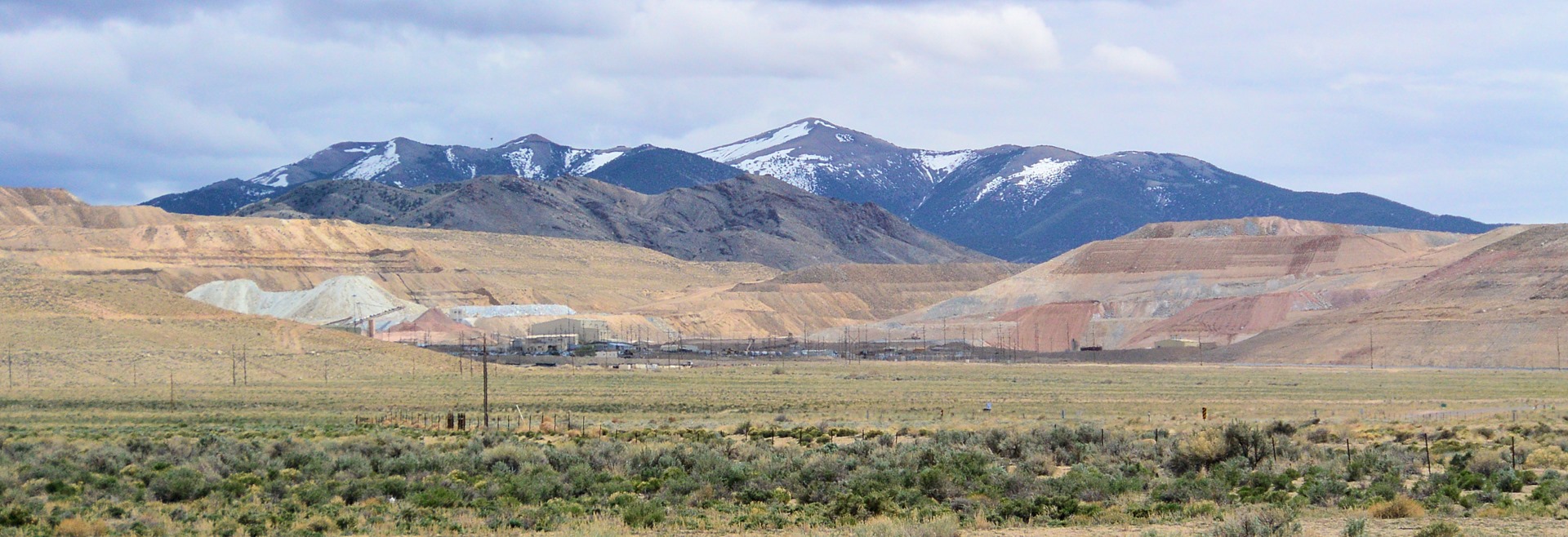
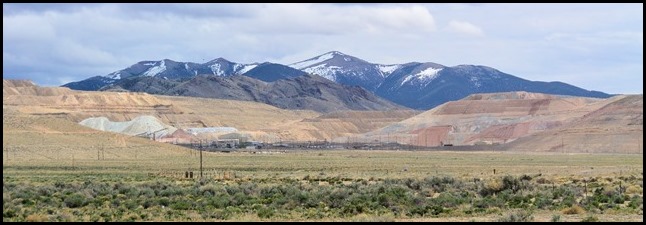
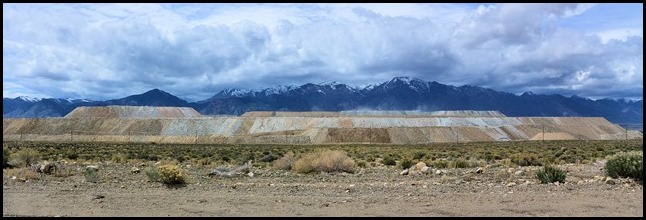
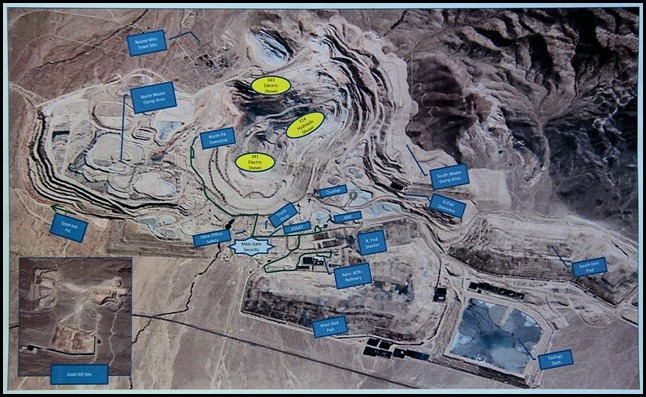
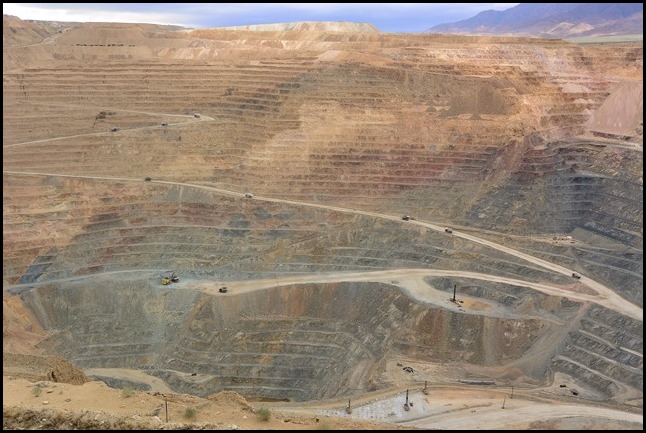
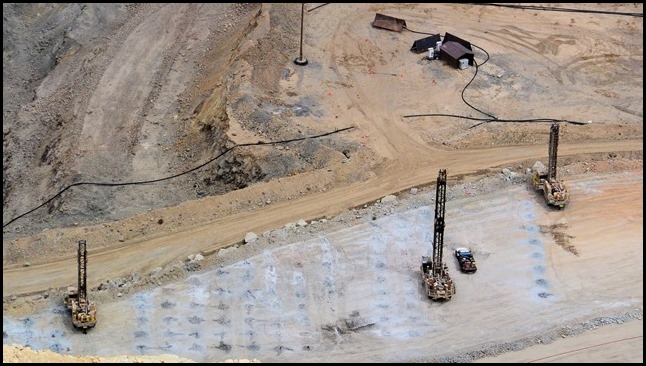
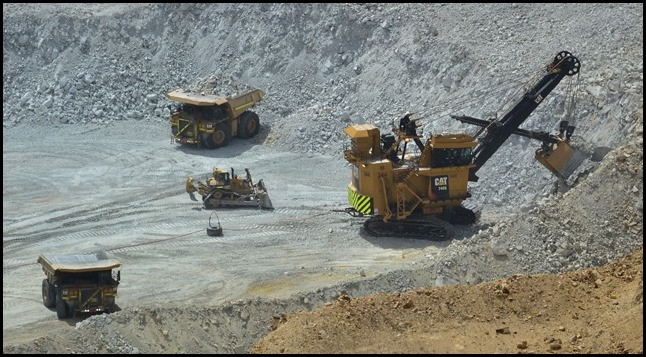
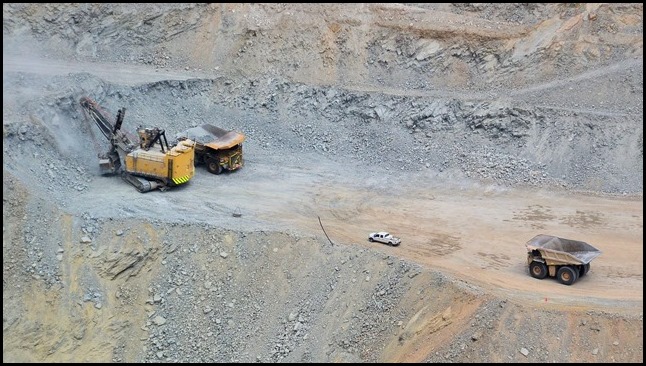
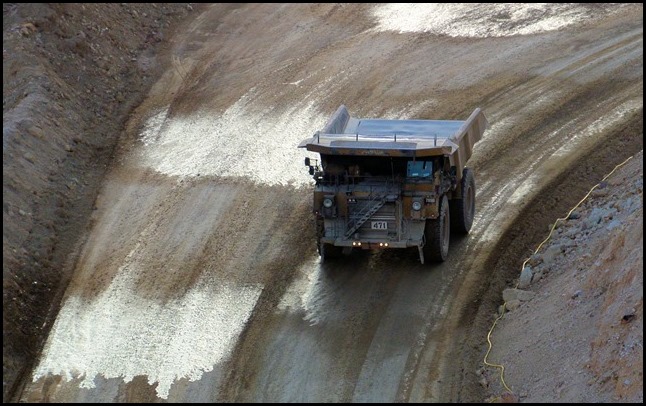
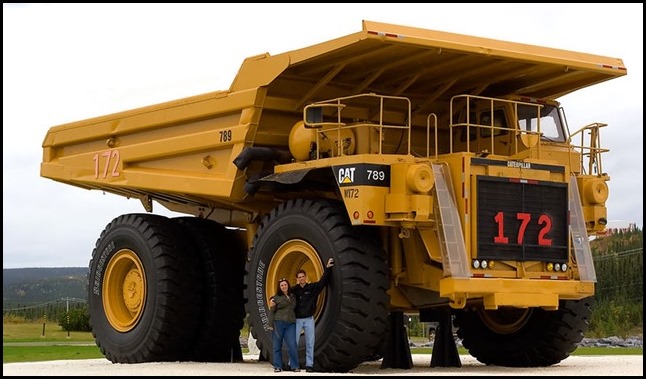
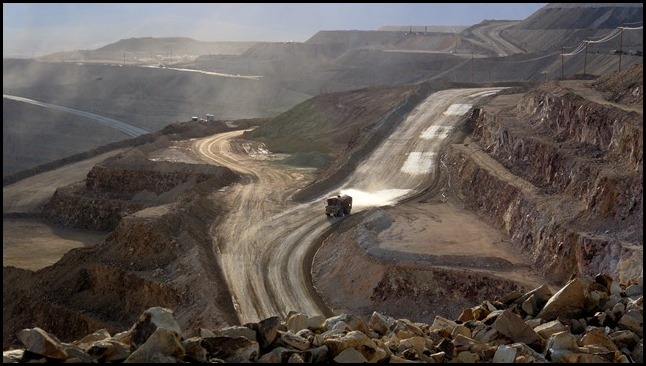
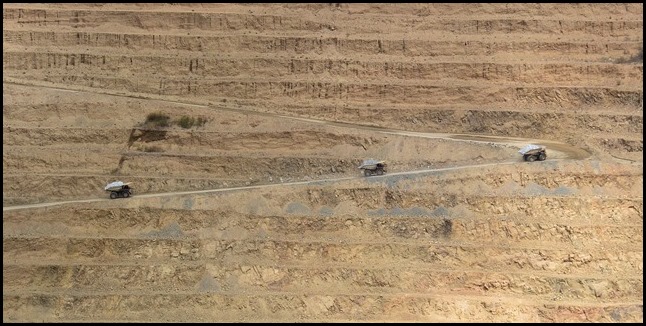
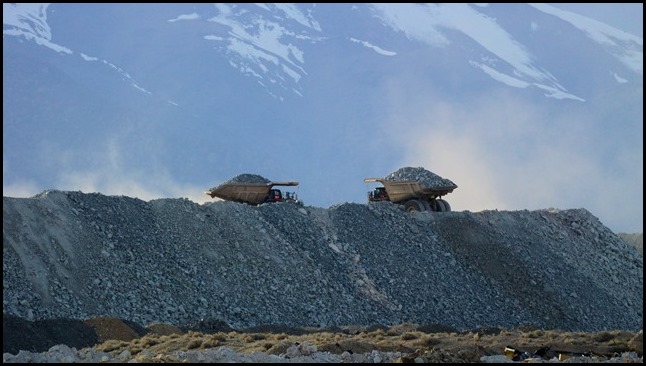
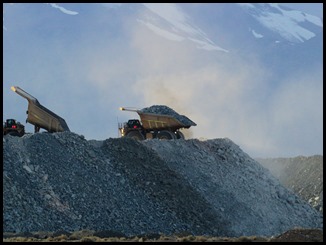
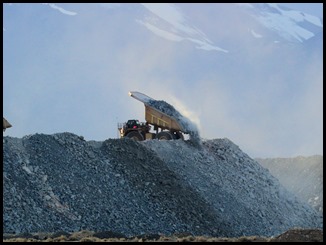
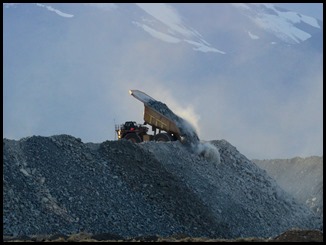
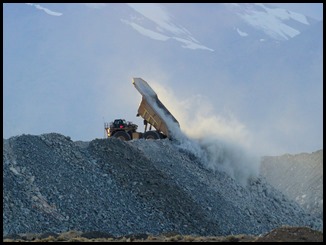
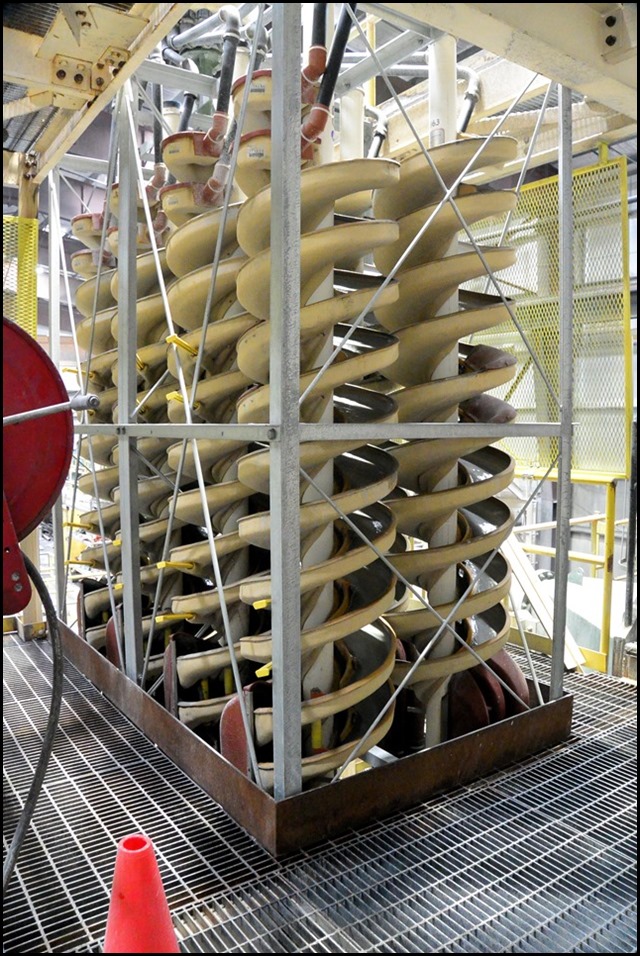
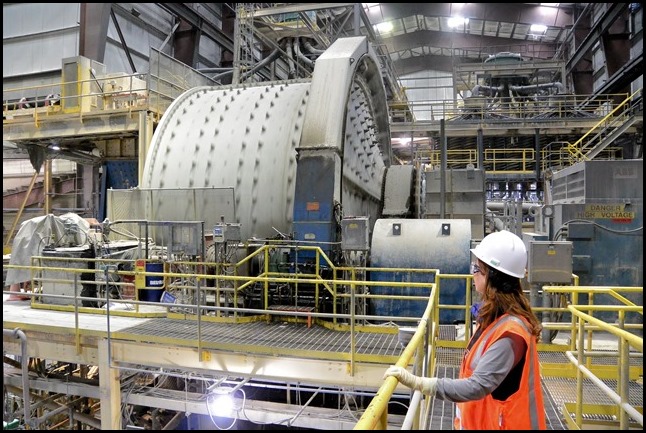
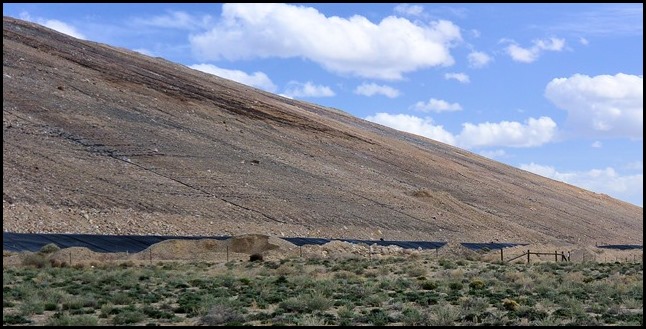
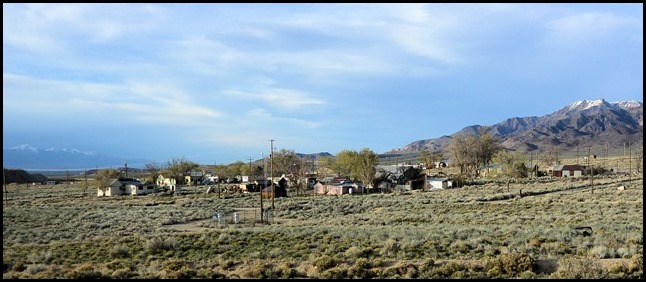
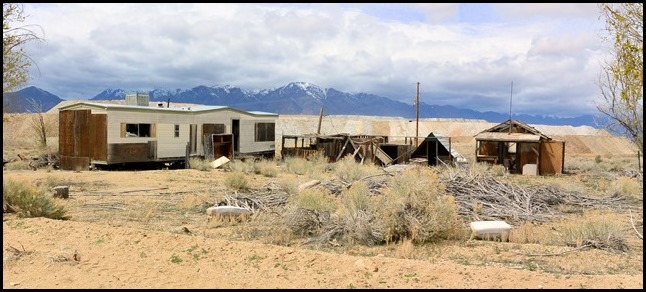
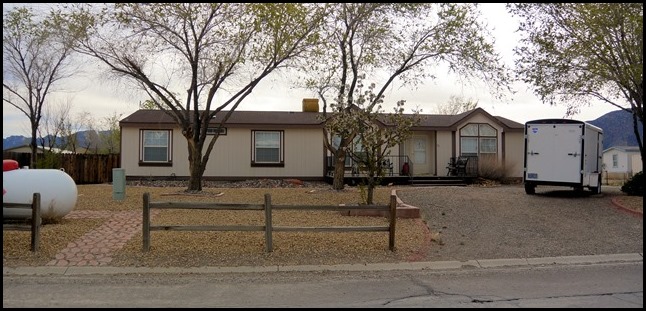
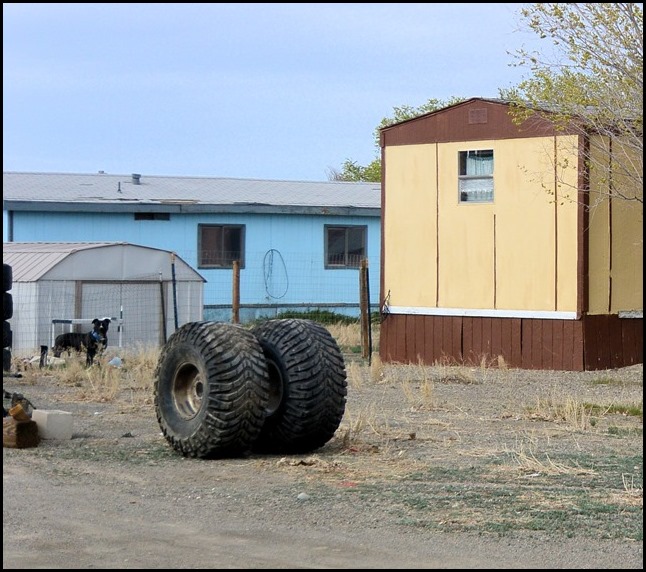
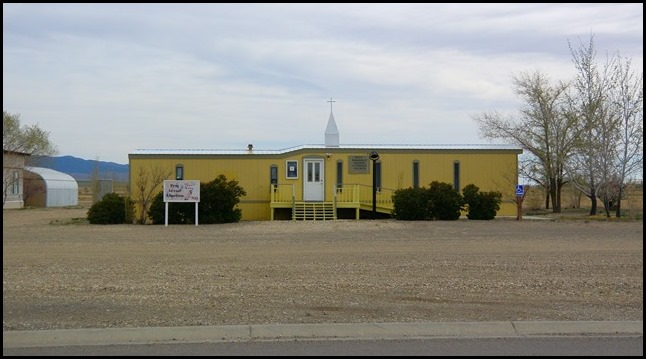
Worked at round mountain for about 11years last year was 2006 would like to see it again, to see the changes. I was a dozer grader 0ne on crew 2 ,but don’t want to go through a lot hoops